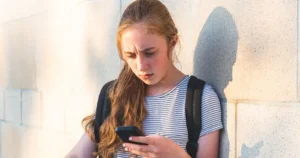 Close video
Close video
What’s inside the hub
 Close video
Close video
Learn about radicalisation
Understand its online risks online to offer the right support for your child’s mental health and wellbeing.
 Close video
Close video
Protect children from radicalisation
Give children the right tools to challenge extremism online and build their digital resilience.
 Close video
Close video
Dealing with radicalisation
Learn strategies of how to address radicalisation and where to seek help if you are concerned.

Radicalisation resources
See a list of organisations that can support you and your child.


Educate Against Hate
A guide to help parents discuss radicalisation and extremism with young people.
Protecting children from radicalisation and extremism
There’s a chance that your child may meet people online or visit websites that could lead them to adopting extreme views or experiencing radicalisation.
Curiosity could lead your child to seek out these people, or they could groom your child. They could then encourage your child to adopt beliefs or persuade them to join groups with extreme views and actions.
To protect your child from radicalisation or to learn how young people might be targeted, navigate our advice hub. Explore expert tips on how to prevent radicalisation and where you can go for further support.
Watch parent’s story about her son
Christine Boudreau shares her story about her son who was killed while fighting for ISIS
 Close video
Close video
Recommended resources
Featured radicalisation articles
 Expert opinion
Expert opinion
How to counter online hate and extremism with young people
Hate and Extremism Analyst, Hannah Rose, shares insight into how young people might get involved online. Learn how to counter online hate and extremism to support children’s safety.
 News & blogs
News & blogs
What is 4chan and why is it controversial?
Launched in 2003, 4chan is an established imageboard website with 20 million visitors monthly and 900,000 new posts per day.
 News & blogs
News & blogs
Going Too Far – tackle extremism with this classroom resource
Created by LGfL and the Department for Education, Going Too Far is a new resource for teachers to help students understand extremism and dangerous or illegal behaviours online.
 Guidance
Guidance
What is the dark web? – Advice for parents
To help you understand the risks to children, we’ve pulled together a quick summary of what you need to know.
 Q&A
Q&A
How do I start a conversation to explain what extremism and radicalisation is to my child?
Get advice on talk to a child about extremism and radicalisation to ensure they feel supported and are aware of the dangers they may face.
